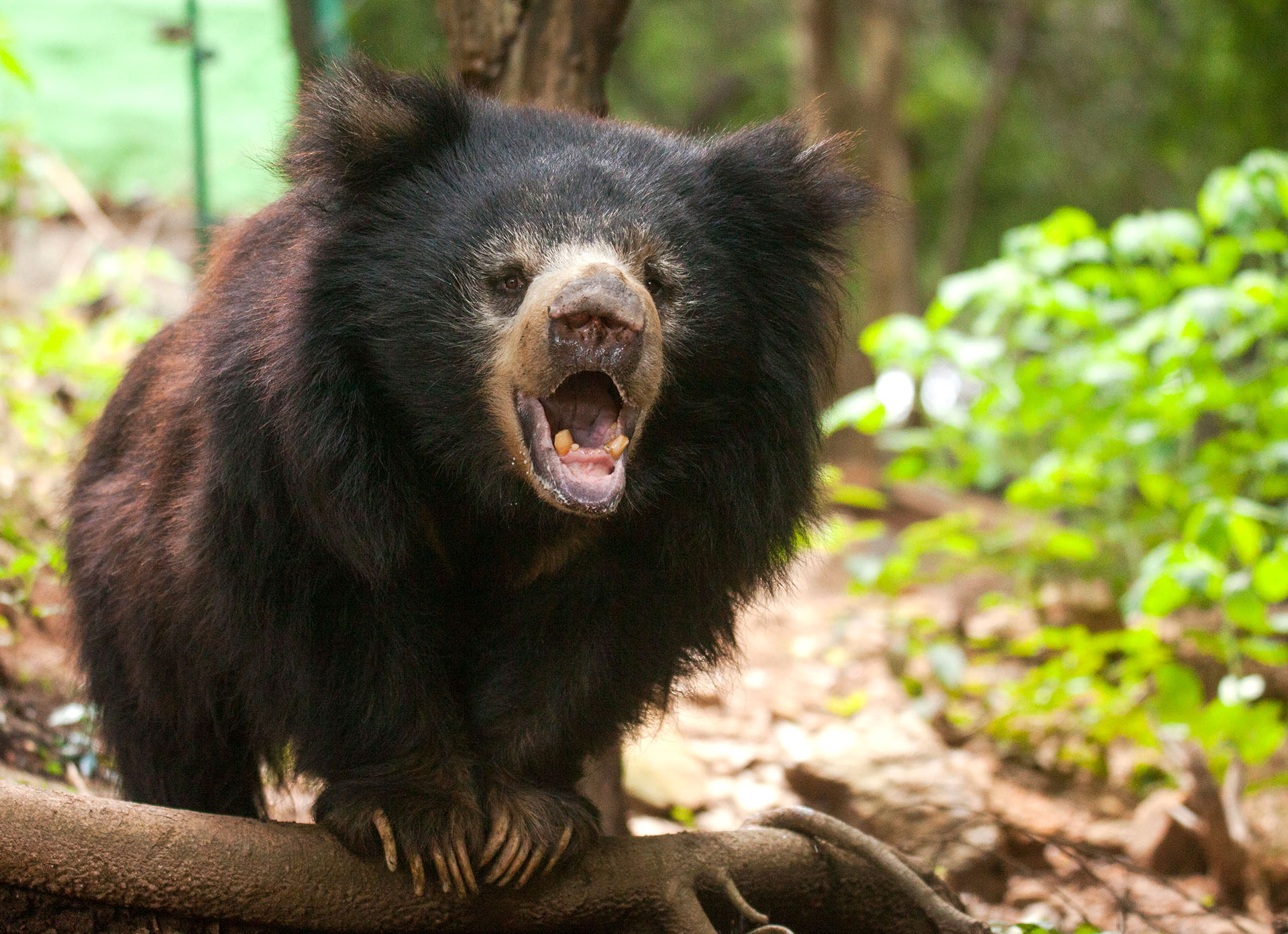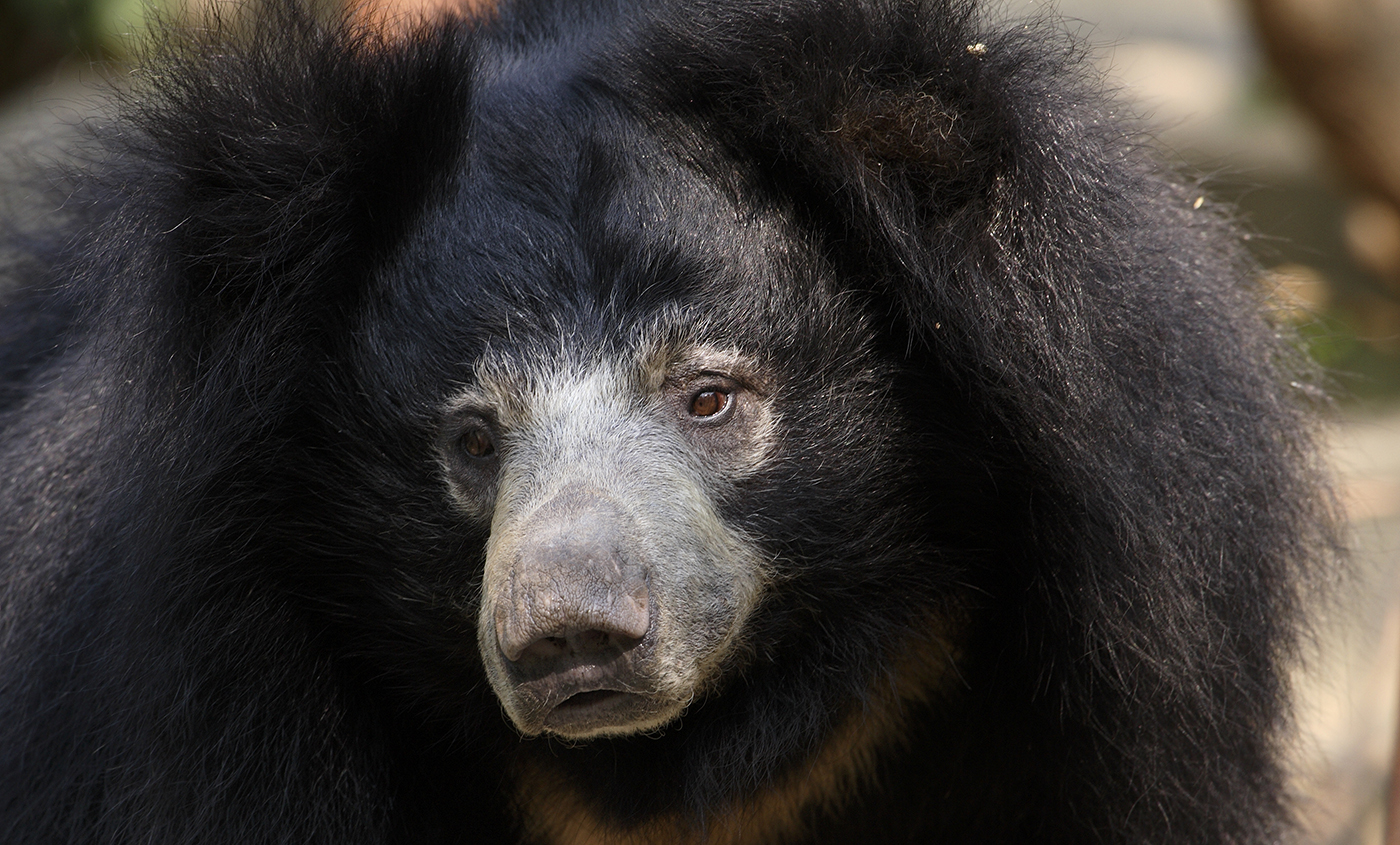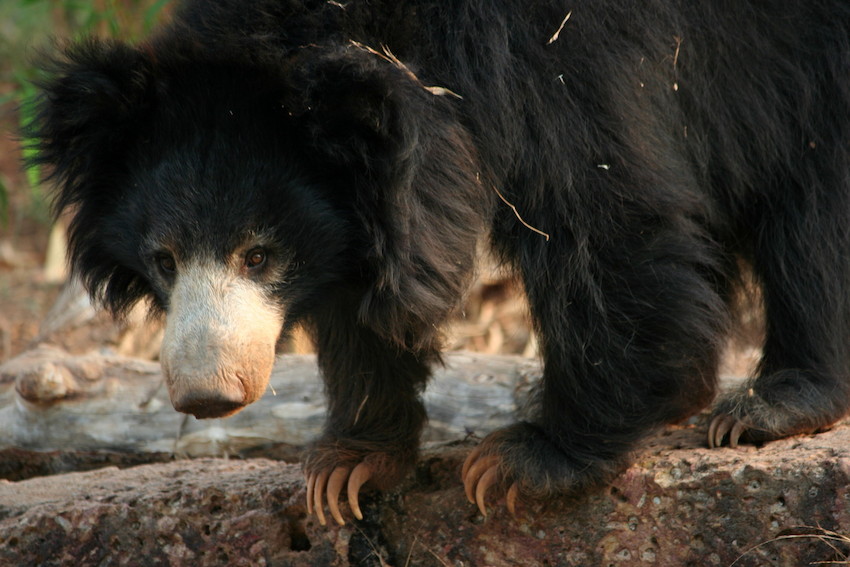
One could make the argument that bears seem slothful while sleeping, but once awake, they are eating machines. Photo by Donna Dewhurst.


Chances are you've heard of a 'murder' of crows, but what about a 'parliament' of owls or an 'asylum' of loons? As a naturalist, I decided to research the origins of these unusual terms. What I found in many cases was unexpected, a reflection on how language often incorporates humor and the human perspective.
First of all, a collective noun in the English language for a group of animals is called a 'term of venery' with the original meaning related to Medieval hunting. The oldest reference is The Book of Saint Albans, an essay on hunting, published in 1486. One of my favorite names tracks back to that reference, where a group of bears is called a 'sloth.' Sloth comes from the Middle English adjective 'slow' and is formed when an adjective is converted into a noun by adding a 'th.' We learn from this that Medieval hunters thought European bears were slow. Perhaps they'd have coined a different nomenclature if they had crossed the path of an Alaskan grizzly.
Groups of polar bears have been called a 'celebration.' Polar bears only tolerate others in close proximity if there is a good food source like a bowhead whale carcass, which could appear like a dinner 'celebration.' However, with polar bears, a new term has risen in popularity over the last 40 years. Aurora was a famous polar bear in the Cleveland Zoo in the early 1980s, and the name became common for polar bears in other zoos around the world. In the 1990s, Coca-Cola linked auroras and polar bears in a famous TV commercial. After that, calling a group of polar bears an 'aurora' showed up in titles of art exhibitions, books, and even advertising for Churchill, Manitoba. People seemed to like linking the bears with northern lights, so the term is now part of modern culture. A term more easily traced back to its polar bear roots is arctic, dating back to the late fourteenth century. It originated from both Greek and Latin words with the root 'arktos' meaning bear of the north. Likewise, the name Antarctica adds the synonym 'anti-' or 'opposite' of the Arctic, which in this case would accurately describe a land without bears.
The courtship of sloth bears is a brief encounter. Living as a solitary animal most of the time, the sloth bear makes an exception during the breeding season, May through July. The female then stays in a den for six to seven months until she gives birth, usual. What would you do if you encountered a sloth of bears, a bask of crocodiles or a quiver of cobras? Running the other way would be a good idea. Diving into the surf might help you get away from a swarm of bees if you're at the beach. But then you might enounter a smack of jellyfish or shiver of sharks. Sloth bear, (Melursus ursinus), also called honey bear, Hindi bhalu, forest-dwelling member of the family Ursidae that inhabits tropical or subtropical regions of India and Sri Lanka. Named for its slow-moving habits, the sloth bear has poor senses of sight and hearing but has a good sense of smell.
Our mission We're explorers, and our real passion is human development. That's why we partner with our clients to implement solutions that turn companies into MORE places. We're a company that's leading at designing and implementing solutions – 4Results is all about inspiration, implementation and results – for people who want MORE. 4 results marketing. 4Result: Sales, Marketing, Quality & Management Solutions, Specialist in consultancy, Q-for label. The Pilot Sport 4 S is the 'Max Performance' as it is the direct replacement for the Pilot Super Sport. It's an interesting question. The Pilot Sport 4 is the direct replacement of the Pilot Sport 3, but Michelin moved the game on so much with regards to sporty handling and feel of.

Sloth Bear Size
Now back to a 'murder' of crows. In early Europe, crows and ravens were considered omens of death, often seen gathered as scavengers on kill sites. However, in Alaska, common ravens are seen more as a folk symbol with a memorable role in Alaska Native culture. In Native storytelling, the raven plays the trickster, always provoking trouble, but often actually helping the people. So, ravens are commonly called an 'unkindness' or a 'storytelling.' Interestingly, a group of ravens is also termed a 'congress,' evoking the trickster side of politics. Conversely, we use 'congress' to define a group of bald eagles, the respected symbol of our nation, because their white heads remain reminiscent of the white wigs worn by early politicians. You'll also find bald eagles called a 'convocation,' a term referring to a religious or academic ceremony of great reverence.
A Sloth Of Bears Definition
A 'parliament' of owls is suspected to have come from a poem by Geoffrey Chaucer (fourteenth century) called the Parlement of Foules, describing a dream where Nature convenes a parliament to let birds of prey choose their mates. After a parliamentary debate between several male suitors, Nature decides to let the female bird choose, acknowledging the right to free will and the welcoming of spring. In Alaska, a 'wisdom' of owls occurs more often, perhaps because snowy owls are treated in Alaska Native culture as the seers of divine wisdom and carriers of knowledge from the Elders.

One could make the argument that bears seem slothful while sleeping, but once awake, they are eating machines. Photo by Donna Dewhurst.
Chances are you've heard of a 'murder' of crows, but what about a 'parliament' of owls or an 'asylum' of loons? As a naturalist, I decided to research the origins of these unusual terms. What I found in many cases was unexpected, a reflection on how language often incorporates humor and the human perspective.
First of all, a collective noun in the English language for a group of animals is called a 'term of venery' with the original meaning related to Medieval hunting. The oldest reference is The Book of Saint Albans, an essay on hunting, published in 1486. One of my favorite names tracks back to that reference, where a group of bears is called a 'sloth.' Sloth comes from the Middle English adjective 'slow' and is formed when an adjective is converted into a noun by adding a 'th.' We learn from this that Medieval hunters thought European bears were slow. Perhaps they'd have coined a different nomenclature if they had crossed the path of an Alaskan grizzly.
Groups of polar bears have been called a 'celebration.' Polar bears only tolerate others in close proximity if there is a good food source like a bowhead whale carcass, which could appear like a dinner 'celebration.' However, with polar bears, a new term has risen in popularity over the last 40 years. Aurora was a famous polar bear in the Cleveland Zoo in the early 1980s, and the name became common for polar bears in other zoos around the world. In the 1990s, Coca-Cola linked auroras and polar bears in a famous TV commercial. After that, calling a group of polar bears an 'aurora' showed up in titles of art exhibitions, books, and even advertising for Churchill, Manitoba. People seemed to like linking the bears with northern lights, so the term is now part of modern culture. A term more easily traced back to its polar bear roots is arctic, dating back to the late fourteenth century. It originated from both Greek and Latin words with the root 'arktos' meaning bear of the north. Likewise, the name Antarctica adds the synonym 'anti-' or 'opposite' of the Arctic, which in this case would accurately describe a land without bears.
The courtship of sloth bears is a brief encounter. Living as a solitary animal most of the time, the sloth bear makes an exception during the breeding season, May through July. The female then stays in a den for six to seven months until she gives birth, usual. What would you do if you encountered a sloth of bears, a bask of crocodiles or a quiver of cobras? Running the other way would be a good idea. Diving into the surf might help you get away from a swarm of bees if you're at the beach. But then you might enounter a smack of jellyfish or shiver of sharks. Sloth bear, (Melursus ursinus), also called honey bear, Hindi bhalu, forest-dwelling member of the family Ursidae that inhabits tropical or subtropical regions of India and Sri Lanka. Named for its slow-moving habits, the sloth bear has poor senses of sight and hearing but has a good sense of smell.
Our mission We're explorers, and our real passion is human development. That's why we partner with our clients to implement solutions that turn companies into MORE places. We're a company that's leading at designing and implementing solutions – 4Results is all about inspiration, implementation and results – for people who want MORE. 4 results marketing. 4Result: Sales, Marketing, Quality & Management Solutions, Specialist in consultancy, Q-for label. The Pilot Sport 4 S is the 'Max Performance' as it is the direct replacement for the Pilot Super Sport. It's an interesting question. The Pilot Sport 4 is the direct replacement of the Pilot Sport 3, but Michelin moved the game on so much with regards to sporty handling and feel of.
Sloth Bear Size
Now back to a 'murder' of crows. In early Europe, crows and ravens were considered omens of death, often seen gathered as scavengers on kill sites. However, in Alaska, common ravens are seen more as a folk symbol with a memorable role in Alaska Native culture. In Native storytelling, the raven plays the trickster, always provoking trouble, but often actually helping the people. So, ravens are commonly called an 'unkindness' or a 'storytelling.' Interestingly, a group of ravens is also termed a 'congress,' evoking the trickster side of politics. Conversely, we use 'congress' to define a group of bald eagles, the respected symbol of our nation, because their white heads remain reminiscent of the white wigs worn by early politicians. You'll also find bald eagles called a 'convocation,' a term referring to a religious or academic ceremony of great reverence.
A Sloth Of Bears Definition
A 'parliament' of owls is suspected to have come from a poem by Geoffrey Chaucer (fourteenth century) called the Parlement of Foules, describing a dream where Nature convenes a parliament to let birds of prey choose their mates. After a parliamentary debate between several male suitors, Nature decides to let the female bird choose, acknowledging the right to free will and the welcoming of spring. In Alaska, a 'wisdom' of owls occurs more often, perhaps because snowy owls are treated in Alaska Native culture as the seers of divine wisdom and carriers of knowledge from the Elders.
As I continued to look into more wildlife names, the true origins became even more allusive. One of the wackiest is an 'asylum' of loons, which seemed to come from New England and the American slang phrase 'crazy as a loon.' Loons are territorial and are usually only seen together in family groups or during fall migration. They perform dramatic, sometimes violent territorial displays, appearing somewhat crazy, giving them the collective term 'asylum.' Cuckoo birds, uncommon to rare in Alaska, also group in 'asylums,' likely named more for the common cuckoo's iconic call of 'cuc-coo, cuc-coo.' Casino movie full cast.
What Is A Sloth Of Bears
Puffins group in 'circuses,' perhaps in reference to their colorful, costume-like plumages and comical behavior on land. And, while most call a group of ptarmigan a 'flock,' I like an 'invisibleness' better as it describes their camouflage appearance.
Sloth Bear Behavior
The English language is constantly changing, adding new words as people like and use them more frequently, leaving the door open for even more fun and creative terms for wildlife.
